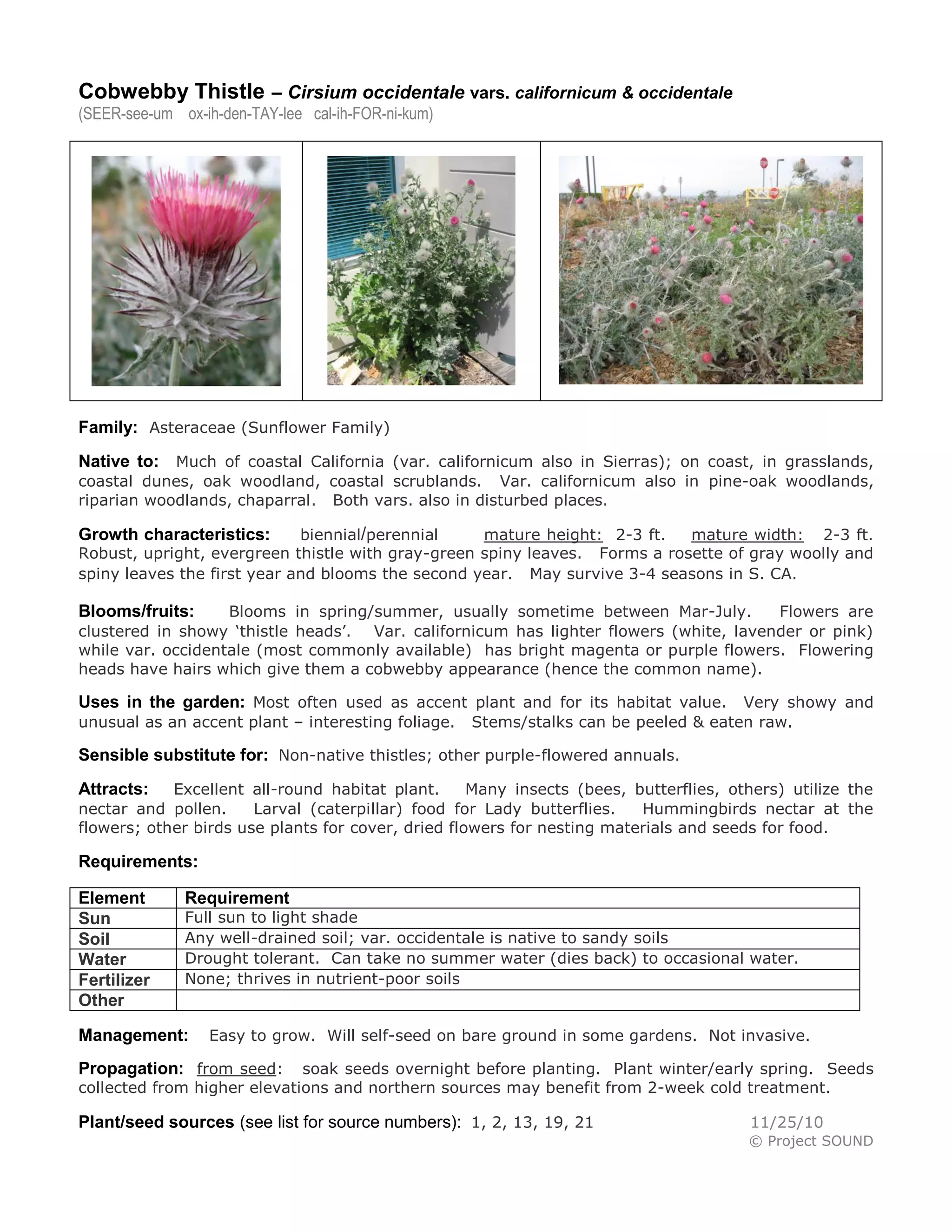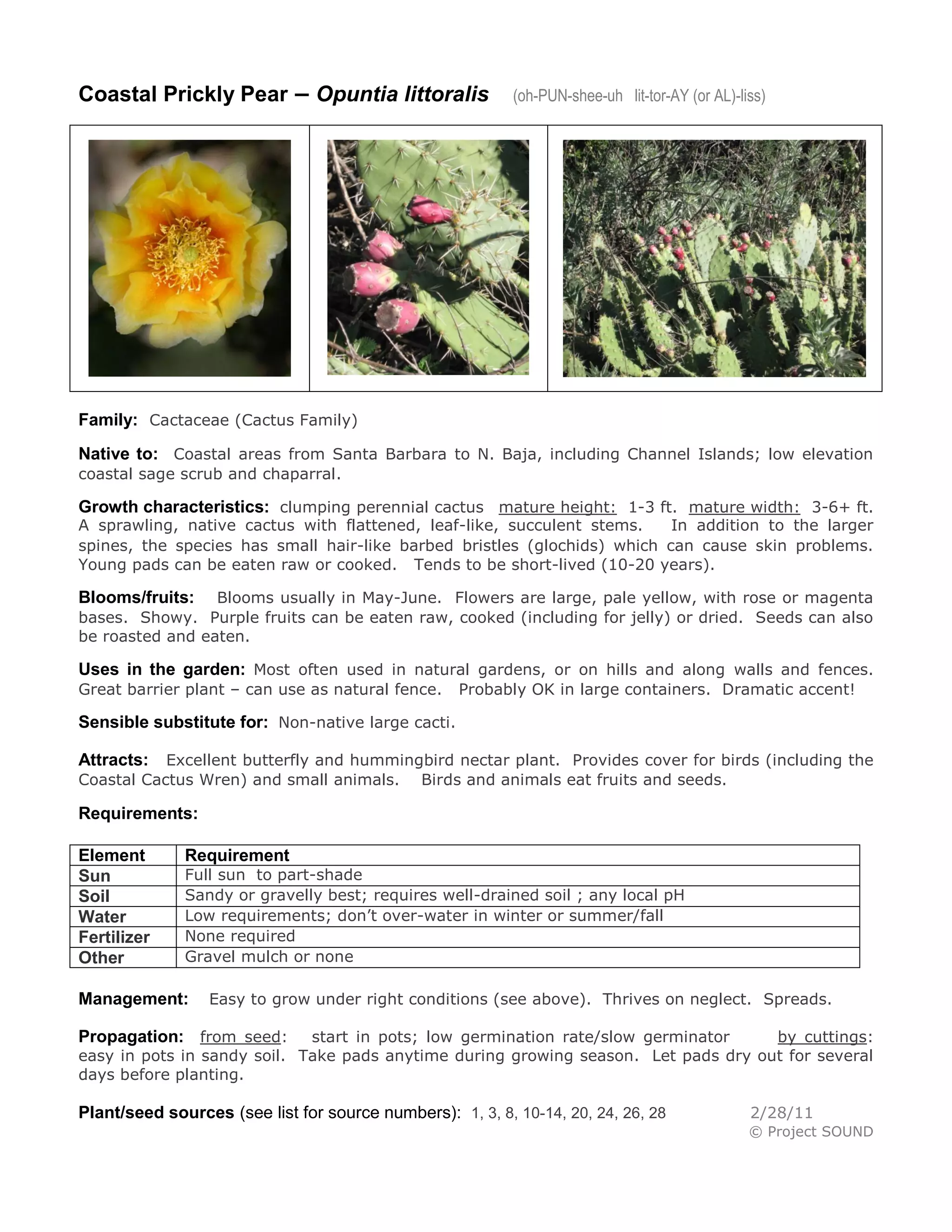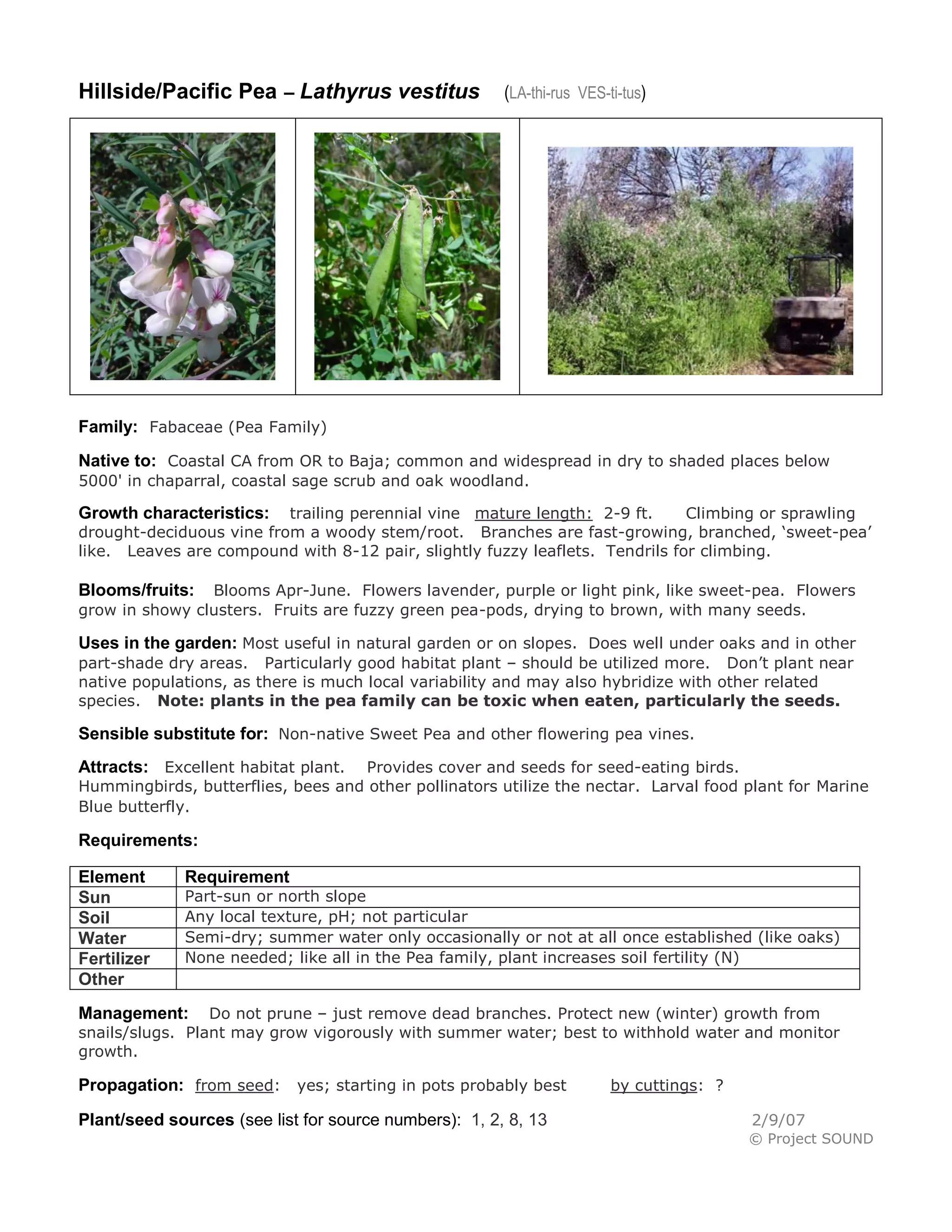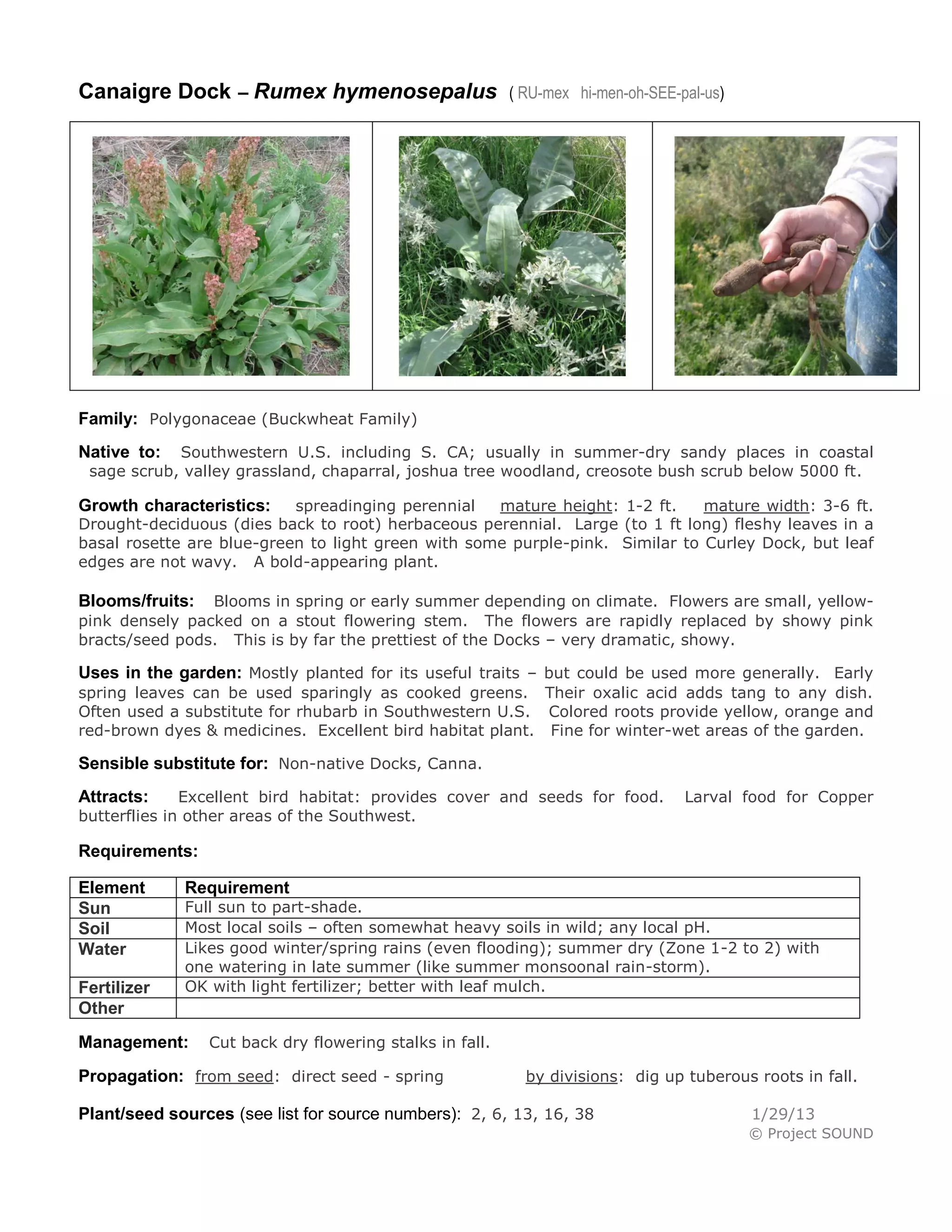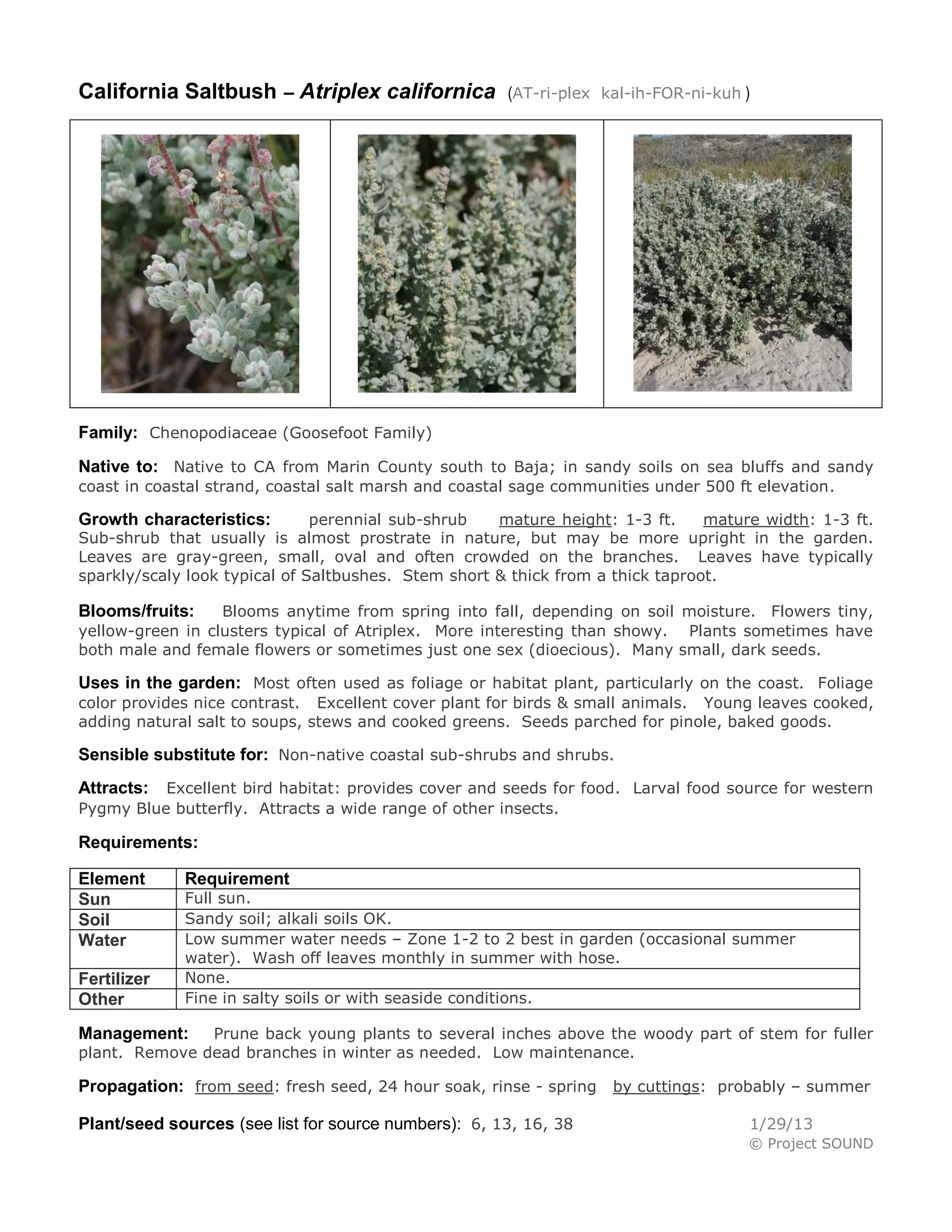This document provides information on Canaigre Dock, a spreading perennial native to southwestern US and southern California. It has large, fleshy blue-green leaves and showy pink bracts/seed pods that replace small, yellow-pink flowers. Canaigre Dock is drought-deciduous and thrives in sandy, summer-dry areas. It can be used as a bold accent plant and its early spring leaves added sparingly to cooked dishes as a tangy green substitute for rhubarb.


